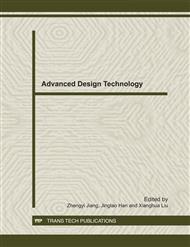p.51
p.56
p.60
p.67
p.71
p.77
p.81
p.90
p.98
Modification of Fly Ash by Sodium Tetraethylenepentamine-multi Dithiocarbamate and its Removing Performance towards Cu(II)
Abstract:
A modified fly ash (MFA) was prepared from fly ash (FA) and tetraethylenepentamine-multi dithiocarbamate (TEPAMDT). The structure of MFA was characterized by FTIR, and the morphology was observed by using scanning electron microscope (SEM). Its removal perfermance towards heavy metals was assessed by employing it to the treatment of simulated wastewater containing Cu2+ and comparing with TETAMDT. The results show that the fine particles in FA assemble to form a porous crystal with high specific surface area after being modified due to the pozzolanic reaction. The dosage of MFA is far lower than that of FA and the treatment cost is less than that of TEPAMDT. The removal rate of Cu2+ can reach 100% at the dosage of MFA 412 mg/L when the Cu2+ simulated wastewater concentration is 50 mg/L. Compared with TEPAMDT, using MFA can not only increase the sedimentation rate of flocs but also reduce the volume of precipitates, and the MFA-Cu precipitate obtained is more stable than TEPAMDT-Cu in acid solution and would not cause the threat of instantly releasing heavy metal under weak acidic and alkaline environment.
Info:
Periodical:
Pages:
71-76
Citation:
Online since:
December 2011
Authors:
Keywords:
Price:
Сopyright:
© 2012 Trans Tech Publications Ltd. All Rights Reserved
Share:
Citation:


